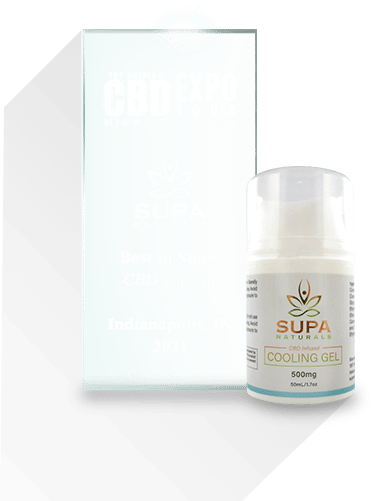Learn How To Start Using CBD: CBD Guide for the Beginner
If you are reading this article, congratulations! You are likely looking into using CBD. This is great news, as some scientific evidence and numerous anecdotal stories have found CBD to be very helpful in addressing a slew of emotional and physical problems.
However, since CBD is so new (it was only legalized in the United States as of December 2018), there are many questions about how to use it. If you’re a beginner, you’re in the right place! Here’s a step-by-step guide to how to use CBD for beginners.
What, exactly, is CBD?
CBD is short for cannabidiol. It is one of the 113 types of cannabinoids which have thus far been identified by researchers. It is produced from the hemp plant, which produces many other types of cannabinoids.
Once it has been processed, CBD can be placed into many consumable or ingestible forms, including edibles, skincare products, capsules and more.
How can CBD help me?
The research regarding CBD is ongoing and rapidly expanding. Indeed, studies show that CBD may be able to address a variety of common different emotional and physical issues. These include acne, anxiety, PTSD, arthritis, depression, reducing inflammation, pain relief, stress reduction and more.
However, thus far, none of these claims can be made definitively. In all of the above cases, only a handful of studies (at the most) have been conducted. While much of the evidence is positive thus far, more research is needed before any medical claim can be made about CBD’s effectiveness. Indeed, the U.S. Food & Drug Administration has actually cracked down on such claims, issuing warning letters to companies that have made medical claims about CBD’s effectiveness.
In only one case can medical claims be definitively made about CBD, and that is by the prescription drug Epidolex, which has been approved to treat two rare seizure disorders in young children. This drug is treated like any other prescription drug and is covered by any insurance which offers prescription coverage.
What is the difference between ways of ingesting CBD?
As noted above, CBD is available in many different forms. These including vaping, topicals (including lotions, creams and face masks), tinctures, edibles, capsules and concentrates.
The difference about which is better for you ultimately comes down to personal preference. However, it’s worth noting that different methods of ingestion take differing times to work. Generally speaking, the quicker you can get the CBD to your bloodstream, the faster it will work. Estimates of the actual time it takes to work vary from person to person, but here is how ingestion methods work from quickest to slowest acting:
- Vaping
- Sublingual (usually in the form of a tincture)
- Oral (Food or drink)
- Topical
Any special steps I need to take before taking CBD?
Yes. First, treat CBD like you would any other supplement, and check with your doctor before taking it. This is because CBD has been found to have some negative drug interactions. Specifically, CBD impacts your CYP450 liver enzymes. This can potentially create a medical issue, as CYP450 affects how your body absorbs medications. As such, consuming CBD may result in you absorbing more of a medication than you were intended to.
As a good rule of thumb, you should avoid taking CBD if you take medication that has a grapefruit warning on it. A grapefruit warning appears on certain medications and urges you to avoid taking grapefruit (or other sorts of citrus fruits) while taking these medications. That’s because these medications inhibit similar enzymes, and this could result in problems for you.
Again, to be clear: Check with your doctor before starting CBD. Your doctor will know what drugs you are taking and be aware of the most up to date research on the compound.
Second, you must make sure that the CBD you purchase has been independently verified by a third-party testing company.
What does this mean? Unfortunately, the U.S. Food & Drug Administration has not yet released regulations regarding testing and labeling of CBD products. As a result, less than honest sellers of CBD are selling subpar, poorly processed and mislabeled products. A November 2017 study, conducted by the University of Pennsylvania purchased and analyzed 84 different CBD products. It found that nearly 70% of the products tested were inaccurately labeled. In some cases, products even had THC when they were labeled as being a THC-free strain. For people with food allergies or who are drug tested as part of their job, this can be a major problem.
In order to combat these issues, reputable CBD vendors have turned to third-party testing. This is a process by which CBD sellers will hire an outside, independent company to conduct laboratory testing on their CBD product. The results of these tests should then confirm the company’s labeling of its products. More importantly, a Certificate of Analysis will be made available which confirms that the batch of CBD tested has been labeled appropriately.
When you purchase CBD, you absolutely must purchase a product that has been independently tested. Otherwise, you run the risk of consuming products and ingredients which are not listed or labeled.
Once I talk with my doctor, are there any precautions I need to take?
If your doctor gives you the all-clear and you can confirm that the CBD you’re going to purchase has been independently tested, no! You’re good to go.
This is because CBD is non-intoxicating. As long as you take CBD that has been made within current legal guidelines, you will consume no more than .3% THC. THC, which is the intoxicating chemical found in marijuana, is short for tetrahydrocannabinol. Marijuana commonly comes with 20% THC, and the .3% level is far too little to get you high.
Once you confirm that CBD does not have any side effects on you (see below), you will be able to incorporate it as part of your everyday life. There are no restrictions on driving or working with CBD in your system. However, you should use caution when first using it.
How should I use CBD for the first time?
Like any other supplement, cautiously. According to a World Health Organization report, CBD is generally safe and well-tolerated in humans. However, some people do experience side effects, including fatigue, dizziness, dry mouth or upset stomach. As such, the first couple of times you use CBD, it may be worth making sure that you are somewhere where you can lie down or use the bathroom if you do experience any of these issues.
More problematic is that the amount of CBD it takes in order to feel an effect is different for everyone. How much CBD you need depends on a variety of factors, including your height and weight, metabolism and the quality of the CBD. As such, start by taking the lowest possible dose, and pay attention to its impact on you. If you don’t feel any effect, you can slowly increase the dosage until you feel a difference.






